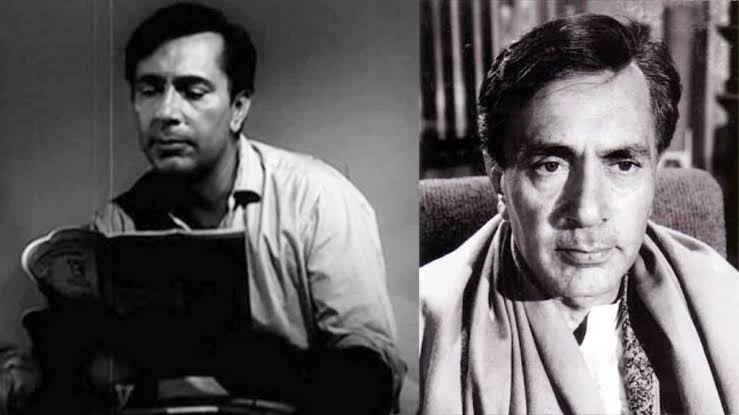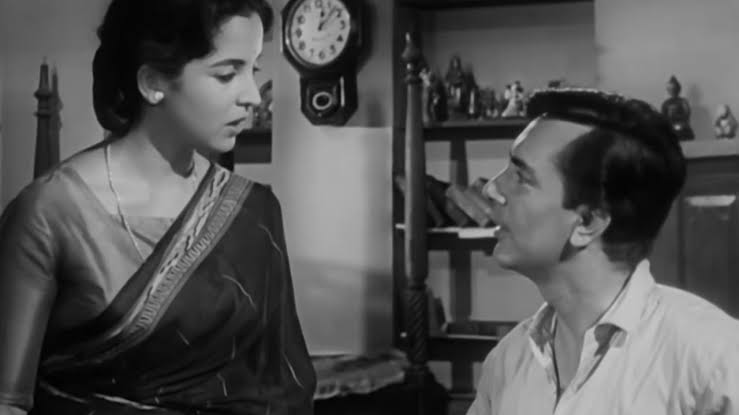Balraj Sahni “An Iconic Name of Hindi Cinema”

Known to be a true gentleman both on and off camera, Balraj Sahni had the rare quality of leaving a lasting impression on people
The period between 1940 and 1960 is considered the golden era of Hindi films that was marked by meaningful cinema and iconic performances. The era produced some of Hindi films’ biggest names. One of them was Balraj Sahni.
He had an illustrious career in which he acted in over 80 films and also wrote six books. Some of his most notable movies were Do Bigha Zamin, Kabuliwala, Waqt and Garam Hawa.
Born in Rawalpindi in undivided India in 1913, Sahni was an academic. He held two Masters’ degrees — one in English and the other in Hindi.
In 1936, Sahni married Damayanti and settled in Santiniketan, West Bengal, where he took up the job of an English and Hindi professor. The couple were theatre enthusiasts and actively participated in plays produced by famous theatre group — Indian People’s Theatre Association.
This is where, Sahni first got bitten by the acting bug, and a few years later, by the 1940s, he found himself in Mumbai looking for roles in Hindi films. His debut in films began with Insaaf and Dharti ke Laal in 1946, while Damayanti also made her debut in the same year in Door Chalein.
It wasn’t until Do Bigha Zamin (1953) that Sahni got noticed and appreciated for his acting ability. The rest, as they say, is history.
Directed by Bimal Roy, Do Bigha Zamin was an openly socialist film and is considered to be one of those movies that initiated the parallel cinema movement
Sahni played the role of a poor farmer who was forced to migrate to Calcutta (now Kolkata) to become a rickshaw-puller to make enough money to save his land from the clutches of a rich landlord.

As preparation for the role, Sahni would go to Jogeshwari in south Bombay, and observe the bhayyas (farmers) there, who had migrated to the city for work.
He wrote about it in great detail in his autobiography Balraj Sahni: An Autobiography —
“Jogeshwari is a sprawling suburb of Bombay, a few miles outside the city. It is the home of Bhayyas from Bihar and Uttar Pradesh, whose main occupation is tending herds of buffaloes, which they maintain there. From the day following my Interview with Bimal Roy, I took to visiting their bus tees. I would go there and watch them minutely — their way of working, the way they walked, squatted on the ground to eat, their accent, their dress, everything!
“I would make a mental note of all the traits and peculiarities of those people and try to imagine myself as one of them… Whatever success I could make of my role in Do Bigha Zamin is thus the result of this study I had made of the way of life of the Bhayyas,” he wrote.
The film went on to become the first Hindi film to win a Filmfare Best Movie award as well as the first Indian film to win the International Prize at the Cannes Film Festival in 1954.
Sahni’s steady stream of notable performances never seemed to stop since Do Bigha Zamin.
Seema (1955), Sone Ki Chidiya (1958), Sutta Bazaar (1959), Bhabhi Ki Chudiyaan (1961), Kathputli (1957), Lajwanti (1958), and Ghar Sansaar (1958) were some of Sahni’s biggest hits.
He paired opposite every leading lady at that time, and also acted in some romantic comedies. One of his most famous cinematic moments was the song Ae Meri Zohra Jabeen from the blockbuster hit Waqt — it is still considered a classic.
His other biggest hit was also produced by Roy — 1961’s Kabuliwala. Based on the famous Rabindranath Tagore story, Sahni played the titular lead and brought the enigmatic character alive on screen. His son, Parikshit Sahni, who also went on to become a famous actor and director, remembers this time with fondness.
In an interview about his father with The Quint, Parikshit recounted how his parents struggled as actors in the beginning, and to shield him from it (and the ongoing freedom struggle and Partition), they sent him to boarding school. He also recalled the time when Kabuliwala was released, and said that life for the Sahni family improved after the movie released and they even owned a motorcycle then.
Perhaps his most famous role was in his final film — Garam Hawa (1973) directed by M.S. Sathyu, which gave a fresh perspective to Partition
Sahni played a Muslim, who is caught between moving to Pakistan or staying back in India. The film is considered one of the finest movies made on Partition as it showed the plight of Muslims in a volatile land in a manner never seen before.
Unfortunately, Sahni never saw his last and most revered film as he passed away the day after he finished dubbing for the film on 13 April 1973.


